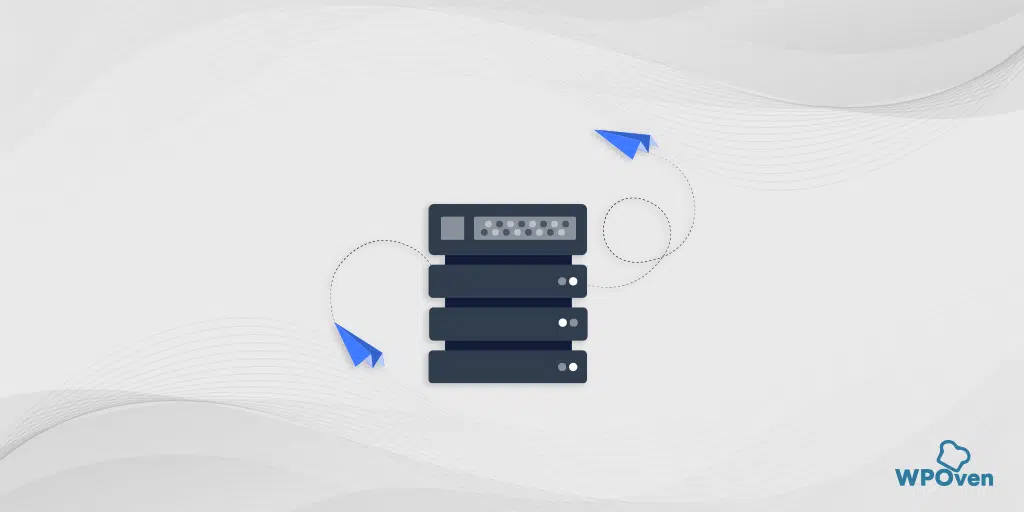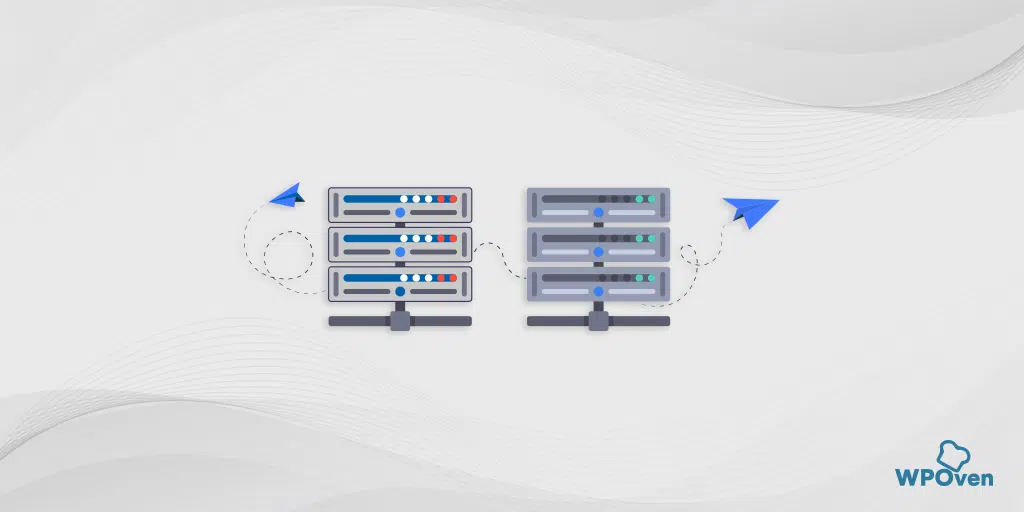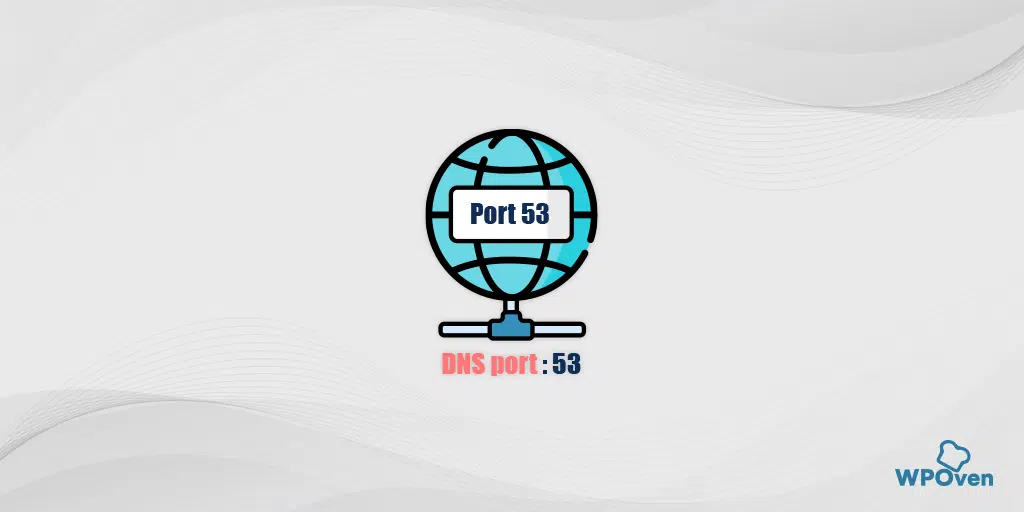If you are setting up an SMTP service, you must come across a section, where you are asked to insert the port while configuring the settings. At this point, if you are not aware of the SMTP ports and their importance then things will be a little difficult for you and you will end up using the wrong port. Which you definitely won’t like to happen!
Fortunately, you do not have to worry about it. In this post, we have covered all the aspects of SMTP port that not only help you to choose the right SMTP port but also let you understand each and every aspect of SMTP port, i.e. what it is. How important is it? and how to choose the right one, we all got it covered in this post. So, stay tuned and keep reading.
What is an SMTP Port?
SMTP full form Sending Mail transfer protocol is a set of communication rules or a standard communication protocol used to send electronic mail via the internet on the web. This is what mail servers follow thoroughly to send and receive emails
Here the mail servers are exactly like any other web server in which it is easy to read and understand domain names and communication between IP addresses.
Similarly, SMTP ports are another way to communicate between two mail servers in which a typical IP address helps to identify the correct computer and the port helps to identify the correct application or service running on the same computer.
To better understand this term, let us relate it to our human world. Suppose an IP address is the real physical address of a shopping complex. Where port will be related to the number of shops in that particular shopping complex.
If you want to send or deliver anything to a particular shop in the same shopping complex, you cannot just mention the shopping complex but you also have to mention the shop not, so that it can reach the right shop.
Read: 🚩 How To Resolve WordPress Not Sending Emails Issue? [2023]
Why Do Different SMTP Ports Exist?
The whole email transmission process requires a few steps to complete. For sending a simple email, First, you need to submit your email to an email client (Gmail, Yahoo, etc.), which submits it to the mail server, after it gets relayed from multiple servers unless and until it didn’t reach its destination, i.e. your recipient’s email client.
During each step in the whole process, there are multiple different ports that come into the picture,
- For Email Submissions (Uses port 587 or 2525)
- SMTP Relay (uses port 25)
- Email Receiving (IMAP uses port: 143 or 993 and POP uses port: 110 or 995)
However, if you want to receive emails from external sources such as Yahoo or Gmail, you need to configure your mail server and allow external emails to be delivered on port 25. This is because mail servers only follow port 25 to transfer or relay mail.
But here things become quite different when you consider sending emails. Whenever you try to send an email, the email client requires you to connect to a different port for the message to be relayed. No matter whether the email client and the server use the same guidelines (SMTP), there will always be a different port that will be used.
Similarly, in the case of receiving emails, the POP and IMAP protocols also use different ports. But you must have a question that arises in your mind if both sending emails and relaying are possible due to SMTP, then why it is required to have different ports?
This happens due to the following main reasons:
- Through this, it becomes easy to restrict or limit spammers from sending spam emails over their network. Even many ISPs (Internet Service providers) by default have started now to disallow their port 25 to send any emails to external clients. Due to this, port 25 will only allow emails from others but wouldn’t be able to send emails through it. This helps in preventing spam emails from the consumer side.
- It helps to eliminate the confusion for the servers to determine whether the user wants to submit a message to the mail server or the user wants the server relay to send a special message to another SMTP server. Hence, using different ports helps mail server admins impose certain restrictions and control over it.
Why Is It Necessary to Choose an SMTP Port?
When you want to connect to an SMTP service, you need to check what sorts of ports the provider uses for incoming emails. It is because you may be required to enter both its IP address and port number.
In case, you try to submit an email to the port that your SMTP provider doesn’t support, your efforts will be all in vain and the email won’t be able to send.
For example, port 25, the original default SMTP port for sending emails is generally by default blocked by ISPs and cloud providers. So, when you try to send an email via port 25, you most probably may encounter problems because so many services have been blocked on port 25.
Therefore, to avoid such encounters, you must find all the details about supported ports in your provider’s SMTP documentation.
What Are the Most Common SMTP Ports and Their Uses?
On the Web, you will find there are 4 most common and standard SMTP ports being used, they are:
Let us explore more about them and their usage.
1. SMTP Port 25: The First Standard SMTP Port
One of the oldest SMTP ports was established in the year 1982 by the Internet Engineering Taskforce (IETF), which no one had ever thought would become a landmark decision to consider port 25 as a standard channel for sending emails on the web.
Still today, you will find SMTP port 25 is being used as a default SMTP port for the transmission of emails. However, it doesn’t mean that you also need to use it, in fact, the majority of email clients, ISPs, and cloud hosting providers no longer use it and block traffic coming in over it.
The main reason for blocking SMTP port 25 is that it’s insecure and provides an easy path for the transmission of emails, through which even malware and bots send spammy emails.
No doubt, it still has importance in SMTP relaying but it is highly recommended you should not go for it to send emails.
However, at WPOven a managed vps wordpress hosting, you can use a Free SMTP server for testing email issues. You can send and receive emails using any address and they will be caught and be available on display.
2. SMTP Port 465: The Outdated But Secured SMTP Port
Apart from being successful SMTP port 25, has security flaws that we have already discussed above. In order to solve this problem, back in the 1990s, the Internet Assigned Number Authority (IANA) started looking for an alternate method to make the transmission of emails more secure and encrypted, which was later called SMTPS (SMTP Port SSL).
The main objective was to provide a secure path for email transmission using encryption methods such as Secure Sockets Layers (SSL) and Transport Layer Security (TLS). Hence, IANA used these protocols in SMTP port 465.
But things didn’t work as they should have, the SMTP port 465 never got recognition, and other methods of sending secured emails started to gain popularity such as STARTTLS.
However, it doesn’t mean the SMTP port 465 has been completely no use, there are some applications and certain cases in which the port is still in use as the default for SMTP submission. In fact, many ISPs and cloud hosting providers still allow SMTP ports for email submission.
3. SMTP Port 587: The Advanced And Secured SMTP Port
As time passed, new methods evolved as a better alternative to the previous ones. Like SMTP port 587, which is established as an advanced SMTP port and used as the default port for secure SMTP submission on the modern web.
Just like SMTP port 465 it also supports TLS but with the advantage of STARTTLS, which provides a complete secure path for email submission over SMTP.
The main objective of establishing this port is to reduce the functionality of mail submission by splitting up the assigned task from the message relay. This means that now the modern port 587 will be responsible for mail submission, whereas mail relay would happen through another less secure port, i.e. port 25.
Due to this advantage, the majority of the email services and cloud hosting providers, by default enable SMTP port 587.
4. SMTP Port 2525: The De Facto And Alternative SMTP Port
The SMTP port 2525 is not yet officially recognized as an SMTP port by IANA or IEFT, but still, it is in practice and used as a modern alternative to SMTP port 587. The best part is even many email services and cloud hosting providers allow this port for email submission if port 587 is blocked.
Now, you must be confused about which SMTP port you should go for. Let us find out.
Read: 🚩 7 Best WordPress SMTP Plugins for Better Email Delivery
What about POP and IMAP?
Apart from SMTP ports, there are other ports available that people usually talk less about. POP or Post Office Protocol and IMAP or Internet Message Access Protocol are two protocols developed initially to fetch mail from a mail server.
The POP3(POP 3rd version) gives access to the inbox stored in an email server. Its main function is to download and delete all the messages from the mail server. This means that whenever a POP3 client connects to the mail server, it can fetch all the messages from the mailbox, store them on their local device (i.e. computer), and completely remove them from the remote server.
Due to this feature, you can check out your emails on your computer even in offline mode. Even, nowadays you will also get an option of whether to keep a copy of your messages on the server or not.
Whereas, IMAP, which stands for Internet Message Access Protocol, lets you get through all the messages and manage them on the email server. It means you will have full control over deleting messages permanently and editing folders as well as being able to search messages too.
In addition to that, it also allows you to retrieve email attributes such as spam mail, trash, etc. and it also supports multiple user connections to a single mail server.
How to Check if Port 25 is Blocked by an ISP?
To check if your port 25 is being blocked by an ISP. The first thing you need to do is to open your command prompt for Windows users, Terminal for MacOS users, and for Linux users open your Terminal emulator.
Now type the following command as shown below:
telnet mail.yourdomain.com 25
If the SMTP port 25 is not blocked you will receive a message something like this
user@localhost:~# telnet gmail-smtp-in.l.google.com 25
Trying 1.2.3.4…
Connected to gmail-smtp-in.l.google.com.
Escape character is '^]'.
220 mx.google.com ESMTP 123si3448417qkd.359 - gsmtp
In case the SMTP port 25 is not blocked, you will receive a message:
telnet: connect to address XX.XX.XX.XX: Connection refused
telnet: Unable to connect to remote host
Summary
From the above post, you must have cleared up all your doubts regarding SMTP ports and their importance. especially how SMTP plays a very important role in email transmission on the web.
To make the whole transmission efficient and secure, especially for transactional emails, you can change the settings of your WordPress site to send emails or messages through SMTP servers. In case, you are using any email service provider such as Gmail or Yahoo Mail, even if they are using an SMTP to submit emails to the mail server.
But if you want to connect to your WordPress site or any email client, to send emails, an SMTP port is required. Some commonly used SMTP ports are:
- SMTP Port 25 – Generally blocked by default but commonly used for just SMTP relay.
- SMTP Port 465 – Deprecated and no longer used
- SMTP Port 587 – Used as the most advanced and secure way for SMTP submission
- SMTP Port 2525 – If Port 587 is blocked, you can use this port alternatively.
Now you will be able to successfully use a specific and right SMTP port for your email submissions.
If you would like to add more information to it or have any doubts regarding SMTP ports, please do let us know in the comment section below:
Frequently Asked Questions
Does SMTP use port 443?
Although there are no such restrictions that have been imposed to use port 444, there are four SMTP ports that are considered to be standard and the first choice of any Internet Service Provider. These SMTP ports are 25, 465, 587, and 2525.
What is the difference between SMTP 25 and 587?
The main difference between SMTP port 25 and 587 is the security feature that only port 587 provides. Due to this reason, Port 25 is only used for SMTP relaying, whereas Port 587 is highly recommended for email submissions by mail clients to mail servers securely.
Why is Port 25 blocked by ISP?
Since port 25 doesn’t provide a secure path for email submissions, the ISP mostly blocked it by default to avoid spamming by users.

Rahul Kumar is a web enthusiast, and content strategist specializing in WordPress & web hosting. With years of experience and a commitment to staying up-to-date with industry trends, he creates effective online strategies that drive traffic, boosts engagement, and increase conversions. Rahul’s attention to detail and ability to craft compelling content makes him a valuable asset to any brand looking to improve its online presence.



![How to Fix "SMTP Error: Could not Authenticate"? [6 Methods] SMTP error Could not authenticate](https://www.wpoven.com/blog/wp-content/uploads/2023/05/SMTP-error-Could-not-authenticate.png.webp)



